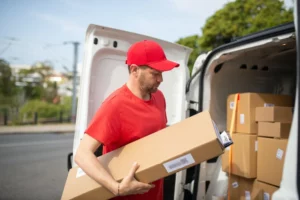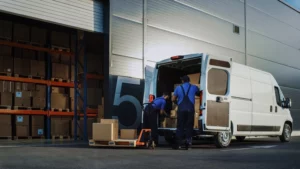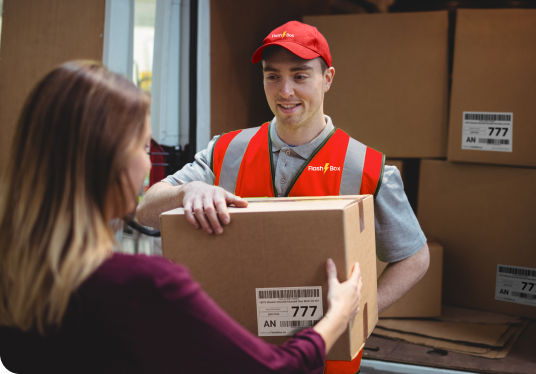Last-mile delivery (LMD) represents the final stage in the e-commerce supply chain, where the product moves from the last transportation hub to the front porch of the customer. To reduce the economic and environmental costs of last-mile delivery, companies are opting to invent robots that can perform deliveries.
The Last-Mile Delivery is Costly
As we said in our previous article, the LMD is the most expensive segment of the delivery chain, accounting for approximately 50% of total delivery costs. Prior to its LMD, a package has enjoyed relatively low costs due to economies of scale. However, in LMD, there may only be one package sitting in a delivery truck, making for an expensive ride.
There is also environmental impact, where the entire carbon footprint of that final delivery truck rests on that one single package. The economic and environmental costs associated with LMD have many companies searching for technological innovation to improve the efficiencies of LMD – and the future is robotic automation.
The Future of Last-Mile Delivery: Robotic Automation
There are three main types of robotic delivery vehicles in development today:
- Large autonomous vehicles: Self-driving cars, vans, and trucks will one day navigate our streets. These vehicles will be capable of almost any type of delivery, with no limitation to size, distance or location.
- Small autonomous vehicles: Rolling or walking units that can carry a small number of packages, a medium distance, down sidewalks, and upstairs.
- Flying autonomous drones: Flying units that can carry a few packages, a short distance, over any terrain imaginable.
All three of these robotic delivery vehicles will be needed to handle all of the complex variables that a human can process today: number and weight of packages, weather, terrain, distance, laws, human interference, etc.
When Will the Robots Arrive?
A study by McKinsey & Company predicts that by 2026, autonomous vehicles will make 80% of last-mile deliveries. By that time, there will be an estimated 200 billion packages delivered worldwide each year.
Before that can happen, the following hurdles need to be overcome:
- Technological barriers around artificial intelligence, navigation systems, batteries, and more.
- Regulatory barriers that restrict usage of sidewalks, roads, and airspace.
There are multiple robotic and automobile companies testing robotic LMD right now. As a result, the delivery industry is in for some major innovative changes over the next few years.
The Future at FlashBox
FlashBox is monitoring the automated LMD market closely. We expect to be one of the first delivery services in Toronto to leverage robotic LMD vehicles once they become market-ready and legal. This will be the ultimate achievement in our corporate goal to bring effective and sustainable delivery service to our customers.
The future may be a few years away, but FlashBox is here today to meet your Last-Mile Delivery needs in the GTA. If you are a business looking to deliver your product in a reliable, environmentally-friendly manner, Get Started today. Learn more about what makes FlashBox the top last-mile delivery service in Toronto.





